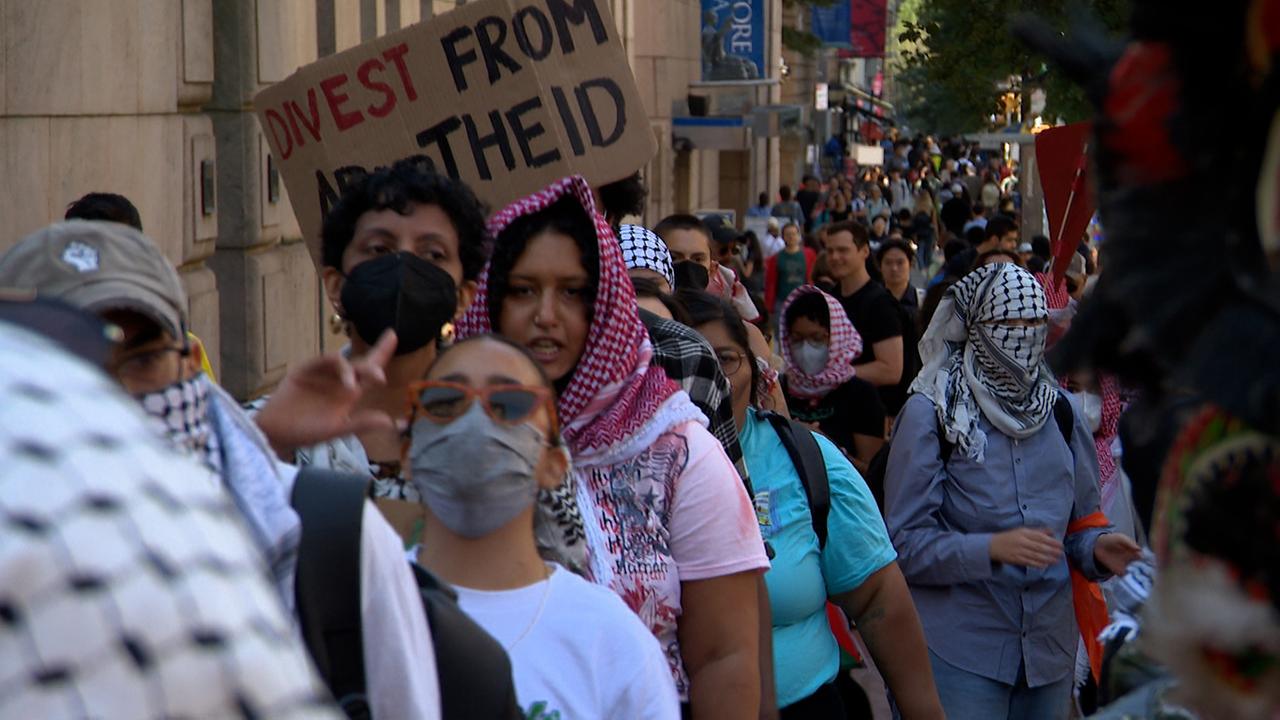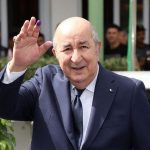In the spring, there were violent protests at New York's Columbia University. With the new semester, the pro-Palestinian protests have started again. But this time, the university administration hopes, there will be no further escalation.
The New York police have divided the sidewalk in front of the cast-iron gate with barriers. On the right is a narrow strip where students are queuing to enter the campus. On the other side of the barrier are the activists who have been doing their endless loop since early in the morning.
This quintessentially American form of protest is called the Picket Line and can have a somewhat intimidating effect on sensitive souls. Especially when the demonstrators, disguised with masks and keffiyeh, are constantly shouting their slogans: “Intifada Revolution”, “From the river to the sea: Palestine will be free” or “Stop the Genocide”.
Protests at Columbia spread across the country
At the start of the semester on Tuesday, the first camera teams were already waiting in front of the demonstrators at the corner of Broadway and 116th St. in Manhattan. In the spring, the pro-Palestinian and anti-Israel protests spread from Columbia University to universities across the country.
The images of the violent evacuation of a tent city and an occupied building on campus went around the world. The university administration was caught between two stools. Some accused it of doing too little to protect Jewish students and of tolerating anti-Semitic actions. Others criticized the violation of freedom of expression. In mid-August, the hapless university president Minouch Shafik threw in the towel.
Welcoming the new class, her successor, Katrina Armstrong, promised to do better. The university has a mission to enable freedom of speech and open debate while also guaranteeing an environment free of harassment and discrimination.
Compulsory courses on respect and Freedom of expression
There are now compulsory courses on respect and freedom of expression for new students, and teachers have been encouraged to create space for discussions in small groups in their seminars. However, the university administration also wants to continue to take tough action against disruptions. The first arrests were made when the statue of the “Alma Mater” in front of the famous campus library was pelted with red paint bags.
The “Alma Mater” in front of the library on the campus of New York's Columbia University is cleaned with a high-pressure cleaner after the paint attack.
A calming down of the situation is exactly what the activists want to prevent at all costs. There are dozens of groups that only loosely coordinate with each other, says Mahmoud, who comes from Syria and has been studying engineering for a year. “I don't even know where the next vigil, picket line or spontaneous 'sit-in' at a lecture will take place.”
As a Palestinian, he has authority from the activists' point of view, but he has to hold back during the protests – out of fear that he will lose his residency permit for the USA if he is suspended.
Demands vary widely
The protesters' goals are diffuse. Demands for a ceasefire in Gaza and a boycott of Israel are the lowest common denominator. In addition, quite a few want Israel to disappear completely from the map and some even dream of a “queer Palestine”. Left-wing Jewish groups such as “Jewish Voices for Peace” serve as proof that the loose coalition is not anti-Semitic.
“There are hardly any other US universities with more Jewish students than here,” says Joe Hawley, professor of literature, and warns against generalizations. “We Jews are not a unified group when it comes to our relationship with Israel and Palestine.” With persistent friendliness, he tries to mediate between the two fronts. He defends the protesters, speaks of a “genocide” in Gaza, but also demands respect for students who particularly identify with Israel at this time.
Insults, intimidation, Jostling
Alon Levin gets angry when he hears such calls for dialogue. He stands in line at the entrance wearing his black kippah and points at the demonstrators. “They're calling for our death. There's nothing to discuss.”
Insults, intimidation and even jostling are part of everyday life for him and his friends. And in discussions in seminars there is extreme pressure to express the majority's opinion. There is no need for appeasement, but rather clear rules and harsh punishments.
Few nuances
Others react more calmly. After all, Columbia University has always been considered a stronghold of protests. That is what characterizes a democracy, says Andrea Flores, who is experiencing her first week on campus. “I have passed the picket line several times now and everything is peaceful.”
“Is it considered peaceful if no one is killed?” asks Stanley Shukhman, who has many relatives in Israel, sarcastically. Of course he is also for peace in Gaza, but here at the university he wants to concentrate primarily on his studies. In doing so, he expresses what many non-Jewish students also feel. No wonder: the pressure to perform is high, and a semester at Columbia costs around $45,000.
At least: In the first few days of the new semester, the de-escalation strategy of the new university administration seems to be working reasonably well. However, the focus is already on the future. October 7th marks the anniversary of the Hamas terrorist attack on Israel. For the activists, however, the date only marks the beginning of the “genocide” in Gaza. It is a battle for the right to interpret the situation. Nuances do not have it easy – in front of and on the hermetically sealed campus of Columbia University.




